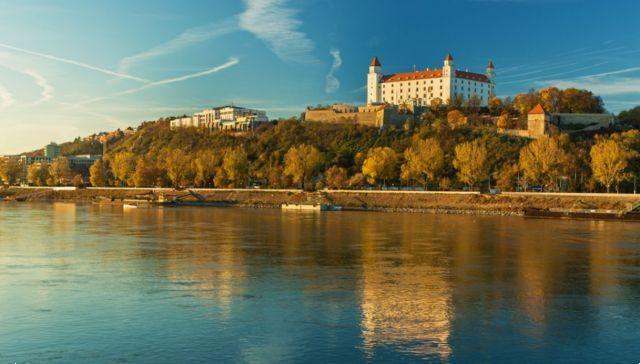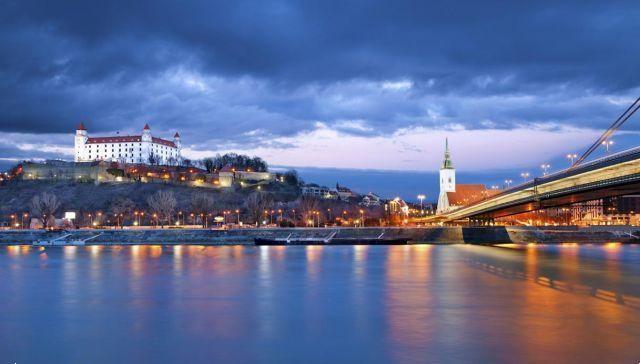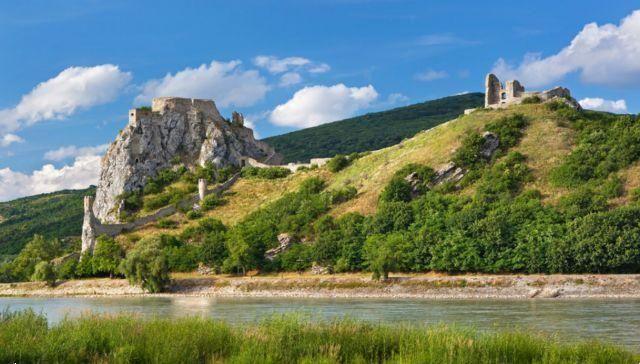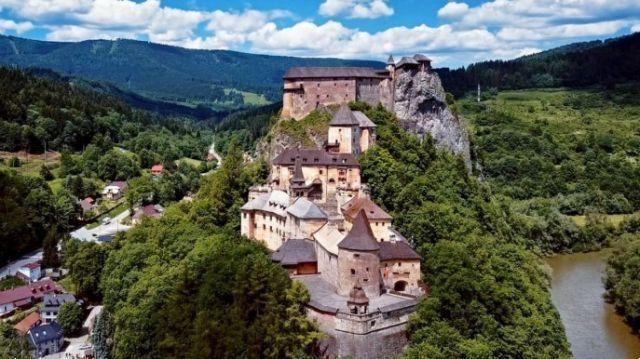 Three days in Bratislava, the capital of Slovakia, transported by the waters of the Danube.
Three days in Bratislava, the capital of Slovakia, transported by the waters of the Danube.
Bratislava, splendid capital of Slovakia, is a city of ancient origins. The first settlements in the area date back to the Neolithic era and this explains the numerous ancient monuments; but also the more recent past of the capital makes it unique in its kind. In this guide we will discover the destinations not to be missed to learn everything about the history and culture of the city: a three-day itinerary, which also includes a jewel of the surrounding area.
First day: a first visit to Bratislava
The visit to the capital of Slovakia begins in Hodžovo námestie square where you will find yourself in front of the large palazzo Grassalkovich. Built in 1760, this palace with a large, very white façade has hosted the president of Slovakia since 1996. Beyond the gates with ornamental golden tips you will witness the march of the guards.
Then immerse yourself in the greenery of the presidential garden (Prezidentská záhrada), at the back of the palace. Walking along the delightful green areas of the garden you will find the beautiful fountain of youth, inside which three young girls are sculpted, and the statue of the great Maria Theresa of Austria on horseback, whose sumptuous air will make you feel very small.
In the period of the twentieth-century artistic avant-garde, one of its protagonists, the Hungarian Ödön Lechner, built one of the most fascinating Catholic churches in the Art Nouveau style in the capital of Slovakia. It's about the church of St. Elizabeth also known as the blue church. Its name is immediately understandable: the soft blue of the external part will leave you astonished. The internal benches and the walls near the brightly colored windows are colored the same blue; The rosé of the apse area created by the lighting of the church is also suggestive. A souvenir photo of this fairytale church is a must.
Walk for a quarter of an hour west along Nedbalova street and in the streets of the city center St. Michael's Gate awaits you, another gem of high historical value. In fact, it represents the only one of the gates that originally allowed access to the capital of Slovakia. Its foundations date back to the 14th century, but after various vicissitudes what you see on the surface is the work of the most recent 18th century baroque. The dragon statue you find on the top was also built in that period. Then enjoy the panorama observable from the mezzanine floor.
Second day: the cathedral and the castle of the capital
Located at the base of the hilly area near the Danube stands the Cathedral of San Martino, an important Catholic place of worship in the capital. The Gothic style of the 14th century reigns supreme. As soon as you enter, let some symphonic pieces from resonate in your mind Beethoven that you know: you are in fact in one of the churches where the famous musician performed. Furthermore, as you walk along it, imagine going back in time and seeing none other than Maria Teresa, who was crowned here, walking next to you.
Walk along the long and high central nave to the end, where you can admire the statue of Saint Martin on horseback and the beautiful chapel of Saint John, both designed by Georg Raphael Donner. Of notable architectural interest are the reticulated vaults above your eyes and the high dome which with its 85 meters reaches the pinnacle of the city skyline. A quarter of an hour walk from the cathedral, visit the Chatam Sofer memorial, the last vestiges of the ancient Jewish cemetery of Bratislava destroyed in 1943.
Get ready to enter the historical and cultural heart of the capital. Climb the hill in front of the cathedral and reach the Bratislava Castle. This marvelous castle stands on one of the most strategic and panoramic places in the city, from which you will admire every corner of the old city below (the Staré Město) and the constant flow of the great Danube. The castle has long been the seat of the Parliament of Slovakia. After all, what better place than this for one of the supreme bodies of state power.
Lo Gothic style that you see dates back to the medieval era in which King Sigismund reigned and one of the obvious signs is the door dedicated to him. You recognize it because it is immersed in the stone walls and by the waving decoration on the facade. However, the period of greatest expansion of the castle can be traced back to the reign of Maria Theresa. To delve deeper into the history of this place we recommend purchasing tickets to the national history museum located right inside the castle.
Third day: on Devin's trail
Enjoy the last day at the border of Bratislava, straight to the ancient Devin Castle. Decide whether to reach it from the capital by public transport, on foot through the Devinska Kobyla nature reserve or using i river services: you can in fact get there with the boats available in the small city port (located in Fajnorovo nabrezie 2) to make your stay in Slovakia even more adventurous. You will recognize it by the imposing appearance of the rocks that support it and which seem to absorb it into nature.
Located in a strategic position, between the Morava river and the Danube and therefore a place of frequent commercial traffic, Devin has always been one of the most favorite places for man. In fact, here we can find remains of ancient peoples, including some traces of Roman civilization. The first construction of the castle dates back to around the 8th century; it was then reinforced and enlarged in the late Middle Ages, acquiring part of the grandeur still visible today. A short distance from the capital you can visit other evocative castles that make a trip to Slovakia so fascinating.







